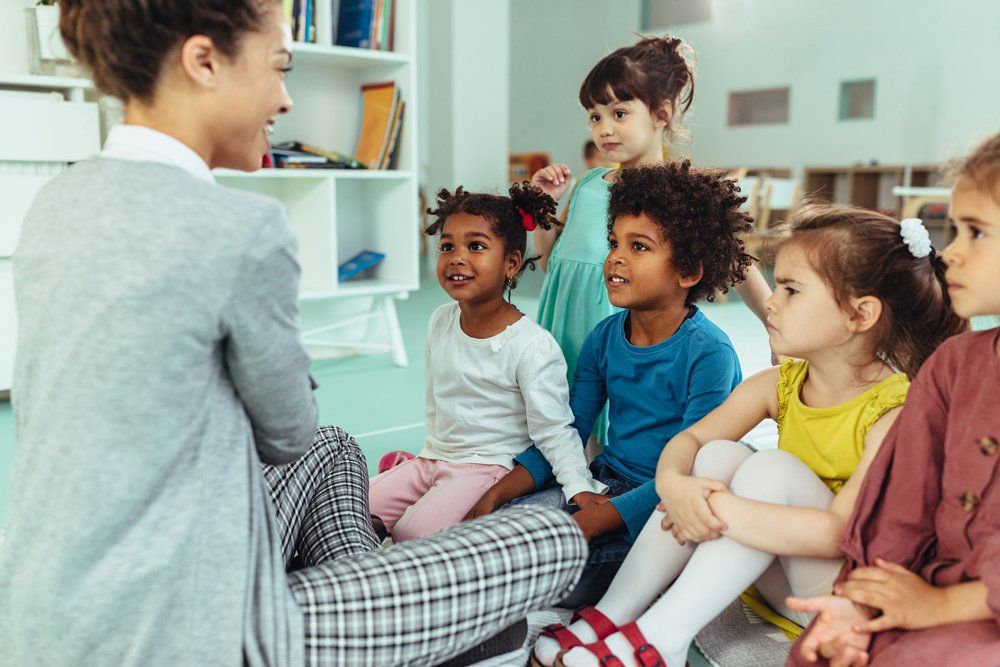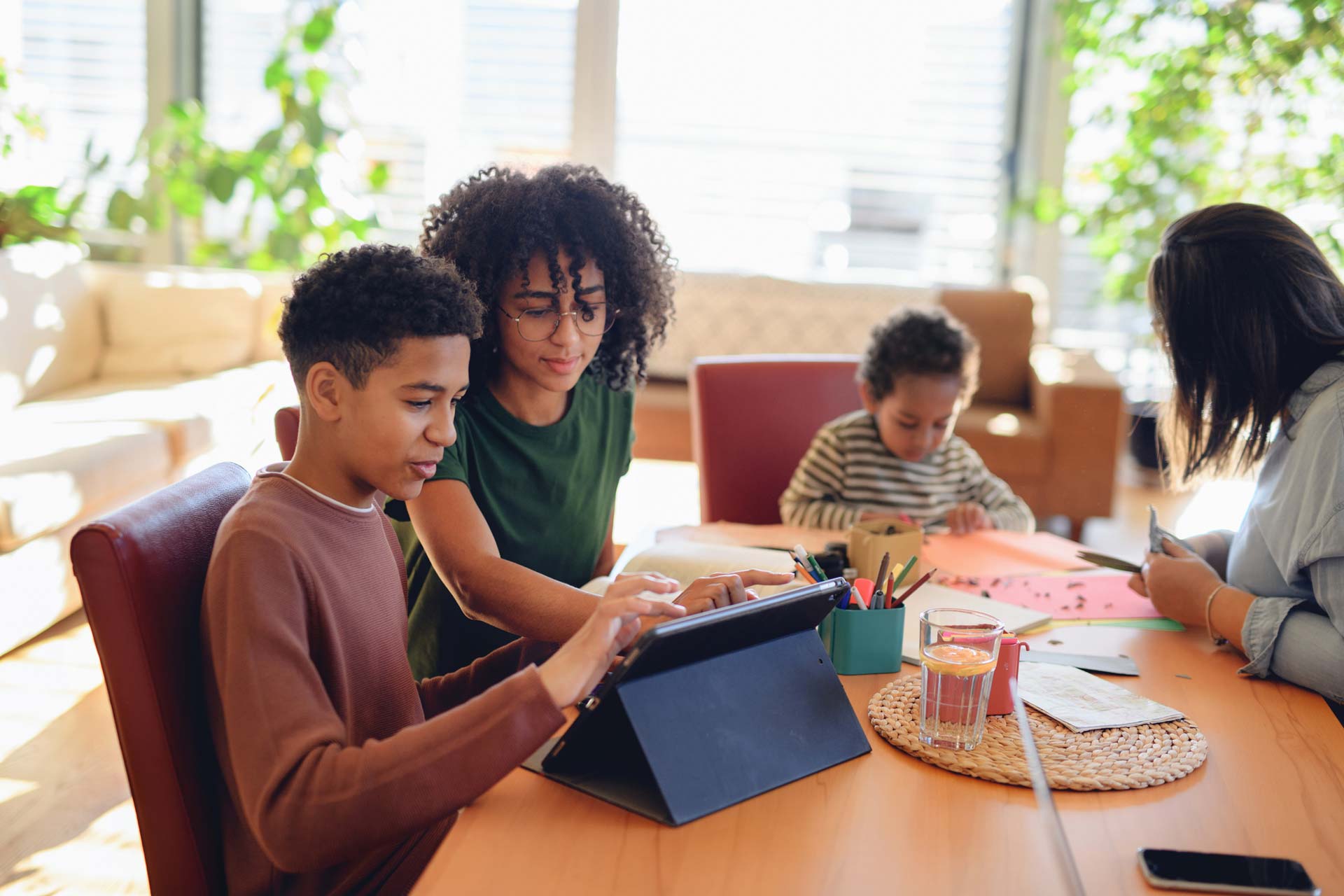4 Ways Preschool Can Help a Child With Communication
- By Admin
- •
- 20 Jan, 2021
- •

As a child grows up, there are many foundations they carry with them into adulthood. One important element to consider is communication. Building communication skills can help a child in every aspect of their life, including their home life, future careers, and social circles they form through adolescence.
Learn how a preschool can help build forms of communication and help your child thrive in the years to come.
1. Communication Types
In a classroom setting, children will often learn many forms of communication. Verbal communication is one of the more important aspects as teachers focus on proper manners and words like please and thank you.
A teacher may also provide hand signals and ways for a child to communicate without words. For example, a teacher may raise a single finger up to signal silence. Children will also learn to raise their hands when they want to be called on or have a request for the teacher.
Technology may also play a role in communication as various apps and computer games provide ways for children to interact and communicate.
The expectations for communication in a preschool classroom will help set the standards for future years of schooling.
2. Patience and Waiting Turns
A classroom environment introduces children to larger settings where many other kids are involved. Through various forms of playing and learning, a student can learn the core values of patience and waiting turns. A child can learn how to properly wait, speak up when they want something, and how to express their emotions without creating problems.
For example, instead of yelling to use a particular toy, a child can learn how to ask, wait when needed, and find alternative activities to participate in. The more the child attends preschool, the more those skills will grow and improve. Even during open play like recess, a child can learn how to wait turns and communicate with others about activities.
3. Social Boundaries
While communication is important with teachers, students should also learn how to socialize with other students. A key element is interacting with other children without taking up any personal space. The social boundaries and communication skills can allow a child to build friendships and play appropriately.
A teacher can help children build empathy and become aware of how others are communicating. For example, a child can learn how other children communicate and express feelings when they are upset, sad, or not in the mood to play. Recognizing these factors in others can make a big difference in the way a child builds relationships.
Teachers can also use books and real-life lessons in the classroom to help children understand social boundaries and proper ways to act with others.
4. Confidence and Self-Image
A big part of communication is having confidence. A child should have confidence to speak up, speak in front of others, and express their emotions without hesitation. A large portion of this confidence comes internally through a child's self-image. In a preschool classroom, the teacher-to-student ratio is typically smaller, giving teachers more time with individual students.
Teachers can instill confidence in children, give attention to their needs, and help build confidence in the classroom. Children are encouraged to communicate, participate, and share with others. Open discussions can give each child a chance to talk and build upon their verbal skills.
Specific lessons may focus on ways to speak and natural ways to get a child to talk. Positive reinforcement can build a child's confidence as they get praise for answering and participating in activities. Daily classroom customs like a question of the day or story time can help a child build the skills necessary to thrive.
For more information on our preschool program, contact us at Riviera Daycare & Preschool. We can help your child thrive and grow through our classroom environment.
Learn how a preschool can help build forms of communication and help your child thrive in the years to come.
1. Communication Types
In a classroom setting, children will often learn many forms of communication. Verbal communication is one of the more important aspects as teachers focus on proper manners and words like please and thank you.
A teacher may also provide hand signals and ways for a child to communicate without words. For example, a teacher may raise a single finger up to signal silence. Children will also learn to raise their hands when they want to be called on or have a request for the teacher.
Technology may also play a role in communication as various apps and computer games provide ways for children to interact and communicate.
The expectations for communication in a preschool classroom will help set the standards for future years of schooling.
2. Patience and Waiting Turns
A classroom environment introduces children to larger settings where many other kids are involved. Through various forms of playing and learning, a student can learn the core values of patience and waiting turns. A child can learn how to properly wait, speak up when they want something, and how to express their emotions without creating problems.
For example, instead of yelling to use a particular toy, a child can learn how to ask, wait when needed, and find alternative activities to participate in. The more the child attends preschool, the more those skills will grow and improve. Even during open play like recess, a child can learn how to wait turns and communicate with others about activities.
3. Social Boundaries
While communication is important with teachers, students should also learn how to socialize with other students. A key element is interacting with other children without taking up any personal space. The social boundaries and communication skills can allow a child to build friendships and play appropriately.
A teacher can help children build empathy and become aware of how others are communicating. For example, a child can learn how other children communicate and express feelings when they are upset, sad, or not in the mood to play. Recognizing these factors in others can make a big difference in the way a child builds relationships.
Teachers can also use books and real-life lessons in the classroom to help children understand social boundaries and proper ways to act with others.
4. Confidence and Self-Image
A big part of communication is having confidence. A child should have confidence to speak up, speak in front of others, and express their emotions without hesitation. A large portion of this confidence comes internally through a child's self-image. In a preschool classroom, the teacher-to-student ratio is typically smaller, giving teachers more time with individual students.
Teachers can instill confidence in children, give attention to their needs, and help build confidence in the classroom. Children are encouraged to communicate, participate, and share with others. Open discussions can give each child a chance to talk and build upon their verbal skills.
Specific lessons may focus on ways to speak and natural ways to get a child to talk. Positive reinforcement can build a child's confidence as they get praise for answering and participating in activities. Daily classroom customs like a question of the day or story time can help a child build the skills necessary to thrive.
For more information on our preschool program, contact us at Riviera Daycare & Preschool. We can help your child thrive and grow through our classroom environment.
Starting preschool can be a daunting experience for children Read this blog to learn how to help your child overcome separation anxiety.
Here are some key questions to ask during a parent-teacher conference and what you can expect from a conversation with your child's teacher.
A solid foundation in emotional development can set the stage for a lifetime of healthy relationships and successful interactions. Read on to learn how.
Know the benefits of outdoor play for young children? Take a look at what parents need to know about outdoor play, play spaces, learning, and development.
As your child enters preschool, they begin to embrace independence. However, you may start to notice certain behavioral problems. Read on for more info.
Enrolling your child in daycare is one way to give them the best start in life. Read on to discover some of the benefits of sending your child to daycare.
Preschool can be an exciting but overwhelming experience for parents and children. If your child is about to join preschool, have the following items.
Three may seem fairly young to start sending your child to preschool, but the benefits of two full years of education are manifold. Here are four.







